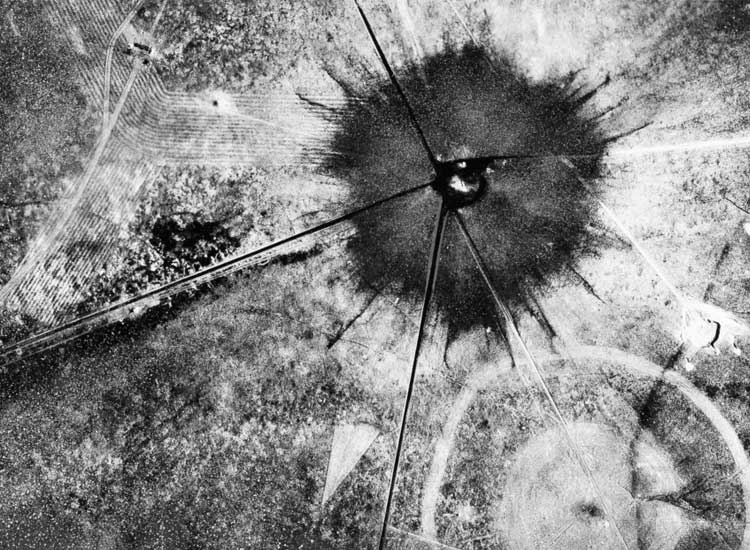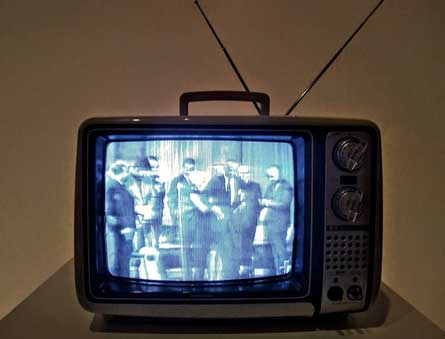Oppenheimer’s Anxiety, Our Anxiety – ” Now, I am become Death, the destroyer of worlds .” The famous quote of the “Father of Atoms” J Robert Oppenheimer taken from the Bhagavad-Gita has been widely circulated again after the film Oppenheimer directed by Christopher Nolan was released worldwide since July 21, 2023. The story of the American physicist who led the Manhattan Project at Los Alamos in early 1942 to build the atomic bomb during World War II remains relevant today as the world still lives in the shadow of bombs and nuclear.
Moreover, with the Russia-Ukraine war increasing the risk. Not to mention the tensions between countries, such as China-United States, China-Taiwan, India-Pakistan, India-China, and North Korea-South Korea-Japan. The world still lives in the nuclear age that Oppenheimer helped create in 1945. The world is also still faced with the same moral and political dilemmas that Oppenheimer experienced about how to manage the threat posed by weapons of mass destruction.
The Oppenheimer film offers a chance to revive the debate about the nuclear threat. When the US dropped atomic bombs on the cities of Hiroshima and Nagasaki, Japan surrendered. World War II ended and Oppenheimer was hailed as a hero. But Oppenheimer was shaken and horrified by the power of the technology he had created.
A few years later, in 1954, Oppenheimer’s security clearance was revoked because he was considered a threat to national security. The reason was that he had ties to the leftist movement at the University of California, Berkeley. This was because his lover and brother, Frank, were members of the Communist Party. There were other reasons.
After seeing the results of the nuclear explosions in Los Alamos and Japan, Oppenheimer no longer wanted to be asked to help make more powerful bombs or hydrogen bombs. Oppenheimer’s story in the film is actually a warning to world leaders. “Atomic weapons are a danger that affects the lives of everyone in the world. This problem must be handled together responsibly,” Oppenheimer said.
This was the end of Oppenheimer’s government career. He no longer had the ability to influence the future of atomic energy in the Cold War. Many physicists, including Albert Einstein, were also disappointed that the US had dropped the bomb without warning on a defeated enemy. Oppenheimer had hoped that the advent of the atomic bomb would discourage people from going to war and create international control over such weapons.
However, once Russia had the atomic bomb, Oppenheimer’s hopes were ignored by hardliners, such as the US President at the time, Harry S Truman. Today, there are nine countries that have nuclear weapons. The US and Russia have about 90 percent of the world’s nearly 13,000 nuclear weapons. At the same time, China’s nuclear arsenal is growing rapidly and could potentially reach 1,500 warheads by 2035. China now has about 40 warheads.
Joan Rohlfing, President and Chief Operating Officer of the Nuclear Threat Initiative, a nonpartisan, non-profit global security organization focused on reducing nuclear and biological threats, said the current world situation increases the risk of nuclear weapons use. For example, the US-Russia diplomatic relationship has plummeted, the US-China is at an all-time low, the tension between India and Pakistan, both of which have nuclear weapons, and the ongoing India-China tensions.
Not to mention the rapidly expanding nuclear programs of Britain and North Korea. Unfortunately, public awareness of all these growing threats is very low. That is why many nuclear experts worry that the world is unknowingly heading towards a nuclear catastrophe. “Today’s nuclear weapons are far more powerful than the nuclear weapons of Oppenheimer’s day,” Rohlfing said.
The nuclear explosions of Oppenheimer’s time alone shook him. When he saw the first nuclear explosion in Alamogordo, New Mexico, on July 16, 1945, Oppenheimer knew immediately that the world would never be the same again. Moreover, the United States eventually developed the hydrogen bomb that he opposed. He was reportedly shocked after seeing the results of the New Mexico test.
The government used the area as a guinea pig because it was remote, flat, and had predictable wind conditions. Because of its secretive nature, the surrounding population was not warned. In fact, the rural population depended on agriculture and livestock for their livelihood. They did not know that the fine ash scattered everywhere was the result of the world’s first atomic explosion.
The government initially tried to hide the nuclear test, saying the explosion at an ammunition dump caused a rumble and bright light that was visible 155 miles (257 kilometers) away. It wasn’t until the U.S. dropped the bomb on Japan a few weeks later that New Mexicans realized what they had witnessed.
According to the Manhattan Project National Historical Park, most of the radiation shot into the atmosphere and fell over an area of 402 square kilometers, but the greatest concentration was about 30 miles from the test site. That’s just the atomic bomb made by Oppenheimer and his friends.
Imagine, a hydrogen bomb is 80 times more powerful than the Hiroshima bomb. After the US, Russia also plans to deploy more powerful nuclear weapons. Oppenheimer once predicted that the nuclear competition strategy would lead to an arms race. And, he was right.
Time Magazine , July 21, 2023, reported that the hope for total nuclear disarmament is unrealistic in the near future. This is because nuclear disarmament requires support from nuclear countries. The first step that can be taken is to build a dialogue to reduce the risk of US-China tensions and restart the US-Russia nuclear dialogue.
It will be very difficult to overcome the nuclear threat unless there is continuous international pressure on the governments of the nuclear states. There is always hope because the number of nuclear weapons has decreased from about 65,000 in the mid-1980s to about 12,500 today. This is thanks to the Treaty on the Nonproliferation of Nuclear Weapons which was made 50 years ago.
The Association of Southeast Asian Nations (ASEAN) is also committed to maintaining Southeast Asia as a nuclear-free region. Indonesian Foreign Minister Retno Marsudi, in early July, emphasized that there is no weapon more powerful and destructive than nuclear weapons. If there are nuclear weapons, the slightest miscalculation will lead to a world disaster and the apocalypse.
To ensure a nuclear-weapon-free Southeast Asia and a global disarmament and non-proliferation regime, the Southeast Asia Nuclear-Weapon-Free Zone (SEANWFZ) Commission has been established. However, 25 years after the signing of the Protocol to the SEANWFZ Treaty, no nuclear-weapon state has signed it.
For Nolan, the story of the discovery of the atomic bomb in his film is a warning at a time when the world is grappling with artificial intelligence (AI). What Oppenheimer did at Los Alamos was the highest expression of science that on the one hand was positive, but on the other hand had high consequences. As in Oppenheimer’s time, the rapid development of AI also raises the same fears about the dangers of technology with uncontrolled consequences.
Many people worry that AI could get out of control and endanger humanity, just as scientists and the public are concerned about nuclear proliferation. “AI researchers refer to this moment as the Oppenheimer moment. The film is a warning and shows the dangers of AI. The emergence of this new technology is accompanied by a sense of fear because no one knows what it will be like,” Nolan said. (AFP/AP)





